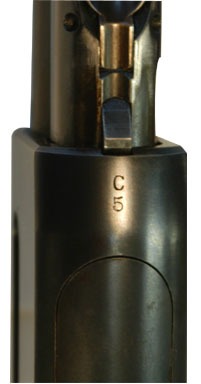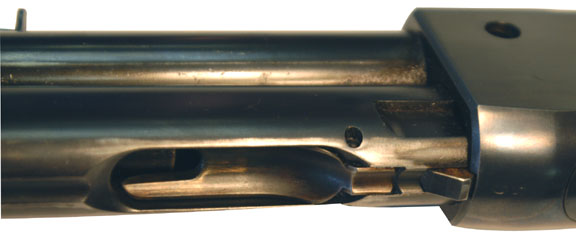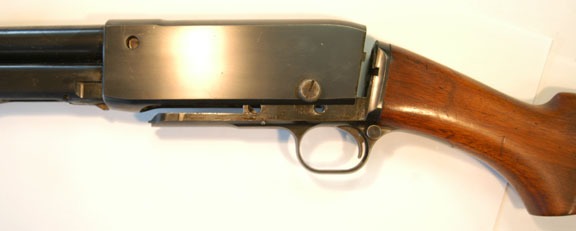A “Nook & Cranny” Remington Model 14 Rifle

| Recently a very special Remington Model 14 rifle was discovered in a back room a t the Remington Arms factory in Ilion. Not surprising until the serial number wa s located on the bottom of the receiver. On top was the letter “C” under which the lone number 5 was stamped. Slowly it was realized that this rifle represented the earliest rifle in the Model 14 series available for observation at Remington Arms, or anywhere else, for that matter. Dusty and dirty with layers of old oil, this rifle would prove to be full of surprises. |

|
This early rifle featured a magazine plug without a brush guard and the receiver was not drilled & tapped for a tang-mounted peep sight. The unlocking plunger had a deep dimple. As expected, the barrel was 22 inches long. The butt plate was missing; however the shape of the stock indicated a shotgun-style butt plate had been used. From this point things started to deviate from the average early model. |
Most readably observable was a sight with a step elevator and two piece body held together by one screw. There is a reference in the Remington 1914 export catalog stating, “At a slight extra charge on special order the model 14 may be equipped with a step sight similar to that supplied on the autoloading rifle.” While the sight on rifle C5 meets that description, it is not certain that this is the sight mentioned in the catalog; however; the sight cannot be discounted as authentic.
The ammunition indicator was missing from the receiver forcing the obser vers to look on the barrel for a caliber marking. On the left side slightly behind the rear sight was the marking 30-30. As early as this gun is, it was no surprise to see this stamping. Early .30 Remington ammunition had been labeled .30-30 Rem. The assumption that the chambering was for the rimless cartridge was proven wrong upon observing that the magazine tube was smooth and the bolt face was cut for a rimmed cartridge. After procuring a base gage, it was found the .30-30 Winchester cartridge fit the bolt face of the C5.
On the top of the receiver were the anti glare grooves, only these were deeper than normal and not as wide across the receiver as observed on other early Model 14 rifles. On the underside of the rifle just in front of the receiver was a protrusion on the carrier. When the action bar was all the way forward, this part of the carrier made contact with the receiver holding the action closed

Anyone who collects or uses the Remington Model 14 or 141 rifles knows that the rifles come apart into two pieces. They are held together by a series of rails and grooves and a cross receiver take-down-screw. C5 proved an exception. There are no rails or grooves! The front point of the trigger guard indexes into the bottom of the receiver.

The butt stock and trigger guard then swings up and into the receiver. There are two tabs on the rear of the receiver that mate with slots in the sides of the lower receiver. Pushing the butt stock forward allows the tabs to slide into place.

What was C5? The minutes of the first convention of the M. Hartley Co. held in Bridgeport, Connecticut on January 9-19, 1911 quote E.F. Drake, Chairman of the Convection, with the following statements:
“We have been working on the drafting and tool departments overtime upon the special equipment for the manufacturing of the model “C” repeating sporting rifle, or the 14 repeating rifle as it is now called. This special equipment is well along toward completion, so far in fact that by some hand work on the stock, fore-end and barrel, we have a few samples already completed and you will have an opportunity of examining them sometime during the convention.”
It would seem that C5 might have been one of those samples. By the time the convention met in January 1912, the rimless cartridges had been adopted along with the spiral magazine tube. The take-down-system had also been changed to a stronger system. All of which C5 is without. With the first convention held in January 1911, the C5 might have been put assembled at the Remington factory in 1910.
So there you have it. A “nook and cranny” Model 14 rifle found gathering dust at the Remington plant in Ilion, New York. A piece of history in developme nt and design of a model now being researched by the collectors of today. Withou t the work of RSA’s “Remington Research Team” this rifle may have stayed lost an d unknown forever.

| On-line Search/Sort Journal Index |
On-line Journal Articles New Journals have links to
|


